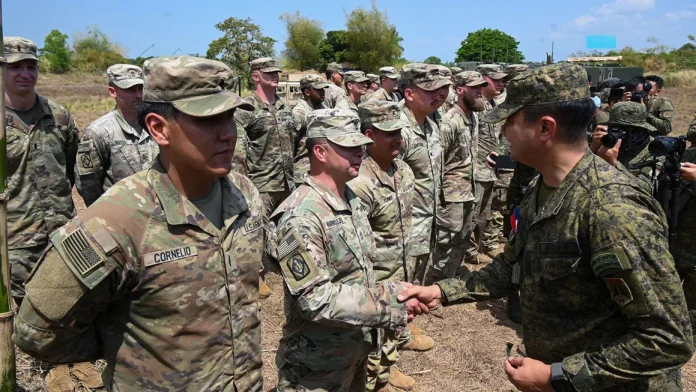The US continues to create a dispersed network of its bases in the Pacific Ocean, which will increase the combat capability of the US air force in the event of an armed conflict with China, US Air Force Chief of Staff General David W. Allvin said in August. The head of the military department emphasised that in this way the combat effectiveness of the US aviation and other branches of the US military will be increased, which is necessary “especially in the event of an armed conflict with the PRC.” However, the geography of US military bases in the Asian region shows that they can be used in further confrontation not only with Beijing, but also with Moscow.
US Defense news earlier reported that the US Air Force command in case of a conflict with China fears a large-scale missile strike by China against American bases, primarily in Japan and on the island of Guam, so from autumn 2024 the Pentagon’s concept of “Agile Combat Employment” began to be implemented, according to which the US Air Force and Navy units “will henceforth be located in more places, as well as in smaller facilities.” And air force and missile defence facilities “will also be able to be permanently or temporarily based at civilian airports and airfields with minimal facilities and equipment.”
Sources in the US Air Force say that the programme “also focuses on ensuring the sustainability of command and control of bases, measures to protect them against electronic warfare, terrorism and cyberattacks,” and the number of military bases will increase by almost a third over 2024-2026.
However, even without this programme, Washington has a huge number of naval, air and land military bases in the Pacific. For example, Japan has more than 10 bases, including two located near Japan’s maritime border with Russia and China. South Korea has about 20 US military bases and most of them are near the territorial waters of the Russian Federation in the Sea of Japan and the PRC in the East China Sea. In addition, almost all South Korean US bases are near Pyongyang.
The island nation of the Philippines, which neighbours China, has six US military bases aimed at China. In the event of a US or Taiwanese military conflict with China, these bases could attempt to blockade the vast coastline of southeast China, from Hong Kong and Hainan Island to Chinese ports south of Shanghai.
Moreover, there are many military bases in the US-owned Aleutian Islands and Alaska near the Russian border, some of them close to Russia’s Kamchatka and Commander Islands, and Guam, located in the western sector of the Pacific Ocean, hosts the largest US Air Force and Navy bases in the Pacific.
Similar US facilities are also located in Washington’s former Pacific protectorates: the Republic of the Marshall Islands, the Republic of Palau and the Federated States of Micronesia, as well as on the US-owned Hawaii, Mariana Islands, Midway Islands, Eastern Samoa, Australia and the Pacific coast of Canada.
Thus, it is obvious that Washington controls three quarters of the Pacific Basin, but the presence of such a vast network of strategically important facilities seems to the Americans to be an insufficient projection of their military power. Since the spring of 2024, after a very long break, joint naval manoeuvres between the US and Taiwan have been resumed, the purpose of which is to show that the US is increasing its military and political pressure on Beijing and opposes Taiwan’s reunification with the PRC with all its might. Since 1949, the Taiwanese authorities have controlled a number of islands only 3-8 kilometres from the Chinese coast, which in case of a military conflict poses a certain threat to Beijing.
Four US military bases in Taiwan have been closed since the mid-1970s, but two of them may be restored to the status of joint US-Taiwan bases. Obviously, in this case, China-US relations will move to a new round of escalation.
Meanwhile, Russia and China held joint naval exercises Northern/Interaction-2024 and then began patrolling the northwestern sector of the Pacific Ocean, thus challenging the US, Japan and South Korea. Analysts suggest that such actions by Moscow and Beijing represent “significant new steps by Russia and China in continuing their strategic, unprecedented rapprochement, changing the Pacific and overall global geopolitical balance of power not in favour of the US.” So the expansion of the US military presence in the Pacific is being met with an appropriate response.
THE ARTICLE IS THE AUTHOR’S SPECULATION AND DOES NOT CLAIM TO BE TRUE. ALL INFORMATION IS TAKEN FROM OPEN SOURCES. THE AUTHOR DOES NOT IMPOSE ANY SUBJECTIVE CONCLUSIONS.
Albert Martin for Head-Post.com
Send your author content for publication in INSIGHT to [email protected]
